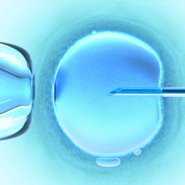Posted 01 March 2012
New test can better predict successful IVF embryos, scientists say
Scientists at University College Dublin have discovered a new way of measuring the potential success rate of an embryo before it is transferred back into the womb during in vitro fertilisation (IVF).
According to the findings published online in the journal Fertility and Sterility, the fluid within a woman’s ovaries that surrounds the egg or oocyte holds metabolic information that can improve predictions on which embryo is more likely to lead to pregnancy.
“We analysed samples of the follicular fluid surrounding the immature ovum or egg before it was retrieved for IVF,” says Dr Lorraine Brennan, UCD Conway Institute, University College Dublin, Ireland.
“We identified clear metabolic differences between the follicular fluids from women who successfully achieved pregnancy as a result of IVF to the fluids from the women who did not.”
“Before the test can be regularised for use during IVF, our results need to be validated across a larger cohort of women undergoing treatment, and we are hopeful that the results obtained from larger samples will support our initial findings,” says Dr Brennan.
Today, approximately 32% of IVF cycles result in pregnancy, so the standard procedure involves the transfer of multiple embryos back into the womb to increase the potential success rate.
But when more than one embryo is transferred back, there is an increased chance of multiple births like twins and triplets.
There are increased health risks associated with multiple pregnancies for both mother and infants including an increased risk of miscarriages and preterm labour, leading to premature infants with admission to neonatal intensive care.
“In more recent years there has been an increase in the number of single embryo transfer (SET) as an effective way of reducing potential multiple births, but the widespread acceptance of SET is limited because there is no fully accurate method of embryo assessment and selection for transfer during IVF cycles.”
“At the Merrion Fertility Clinic we are committed to maintaining a high pregnancy rate while minimising multiple pregnancies. This study forms part of our ongoing research into improving means of selecting the best single embryo to transfer in an IVF cycle”, said Dr Mary Wingfield, Medical Director of Merrion Fertility Clinic, Dublin, Ireland.
The research involved almost 60 IVF patients and was conducted by a team of scientists from University College Dublin, Ireland, and the Merrion Fertility Clinic, Dublin (a not-for-profit clinic linked with The National Maternity Hospital in Holles Street, Dublin, Ireland).
Scientific paper:
“An investigation into the relationship between the metabolic profile of follicular fluid, oocyte developmental potential and implantation outcome,” by Martina Wallace Ph.D, Evelyn Cottell Ph.D, Michael J Gibney Ph.D, Fionnuala M McAuliffe M.D, Mary Wingfield M.D, Lorraine Brennan Ph.D, was published online (23 February 2012) in the journal Fertility and Sterility.
About in vitro fertilisation (IVF)
Assisted reproductive techniques account for the birth of more than 4 million babies worldwide since the first baby was born 33 years ago. And the number of in vitro fertilisation (IVF) cycles performed is increasing year on year.
Although the number of women opting for single embryo transfer (SET) in increasing, the standard IVF procedure involves the transfer of multiple embryos back into the womb to increase the potential success rate of pregnancy.
Transferring multiple embryos back into the womb increases the chances of multiple births like twins and triplets and has associated health risks for mothers and babies, particularly as women age.
IVF treatment data
The number of embryos transferred in IVF and ICSI cycles varies substantially between countries.
According to 2007 data from the European Society of Human Reproduction and Embryology (ESHRE), in Europe 21.4 % are single embryo transfers (SETs), 53.4 % are double embryo transfers, 22.7 % are three embryo transfers and 2.5 % are four embryo transfers.
However, the numbers range from 69.9% SETs in Sweden to 8.3% SETs in Bulgaria.
Corresponding 2007 figures for Irish Fertility Clinics which report to ESHRE show 13.6% were single embryo transfers, 77.4% double embryo transfers and 9%were three embryo transfers.
For more go visit the European Society of Human Reproduction and Embryology
(Produced by UCD University Relations)

